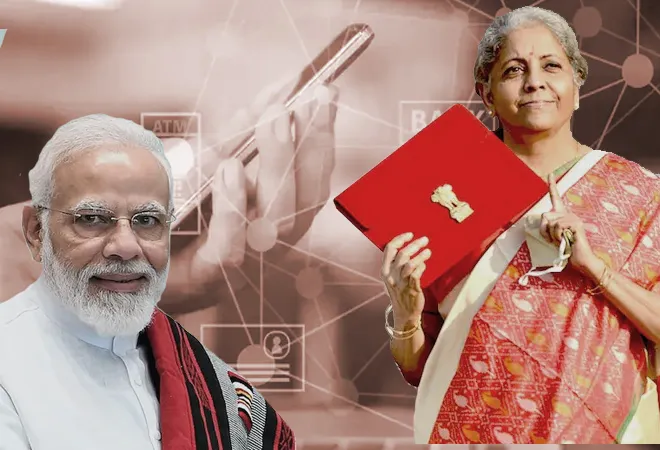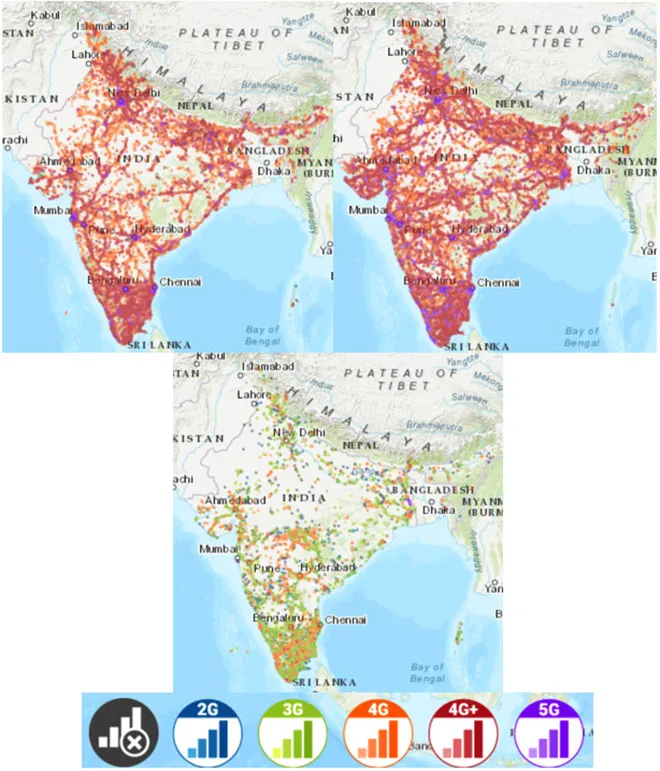
This piece is part of the essay series, Amrit Kaal 1.0: Budget 2023
With the announcement of the 2023-24 budget, the government has leant into the idea of this decade being a golden era or Amrit Kaal for India. Finance Minister Nirmala Sitharaman declared, “Our vision for Amrit Kaal includes a technology-driven and knowledge-based economy with strong public finances and a robust financial sector”. Key to the realisation of this vision has been the expansion of connectivity infrastructure across the country, particularly in improving access in rural areas, to ensure that the benefits of India’s digital revolution reach everyone. This year’s budget is also, in many ways, an election budget – it serves as a moment to reflect upon this government’s track record. How has the mission to bring every Indian citizen online fared?
Millions Connected
Affordable and reliable broadband and mobile services in rural areas are critical in bridging the urban-rural divide, particularly in terms of opportunities for upward economic mobility. It is laudable then that between 2019 and 2021, India added more rural internet subscribers than urban. BharatNet, Digital India’s flagship rural connectivity programme, has laid over 613,000 kilometres of fibre optic cable (OFC), no small feat given the challenges presented by terrain, climes, insurgency and pandemic-related disruptions. Between 2017 and 2021, INR 22,676 crore was disbursed to states and union territories for this project, and by 2025, every village is expected to be online. This year’s budget has earmarked a further INR 3,000 crore for capital projects on the OFC network. In 2020, the Department of Telecommunications launched the Prime Minister’s Wi-Fi Access Network Interface (PM-WANI), which seeks to create a network of last-mile public Wi-Fi providers. The allocation of five per cent of annual collections under the Universal Service Obligation Fund “to enable affordable broadband and mobile service proliferation” in rural and remote areas is another significant step. By investing in affordable and reliable internet services for rural communities, the government is creating new opportunities for economic and social progress, with a positive impact on millions of lives.
Affordable and reliable broadband and mobile services in rural areas are critical in bridging the urban-rural divide, particularly in terms of opportunities for upward economic mobility.
This connectivity infrastructure, along with accessibility initiatives such as ‘Bhashini’, the National Language Translation Mission, and the Common Service Centres 2.0 Scheme – a single service point serving a given village where one can learn about and avail a range of e-government services – form the backbone of Digital India’s mandate to build a digital economy that serves each and every one of its citizens.
Millions to Go
In the coming decade, rural internet user growth is likely to continue to outstrip growth in the urban userbase, and these users will be spending more and more of their time online, to stay connected, avail financial services, access agricultural marketplaces, among other use cases. Already, 90 percent of users access the internet on a daily basis. At the same time, this growth is primarily in mobile broadband; and many future applications, such as IoT in agriculture, will require low latency, steady, reliable connections.
Tracking the progress of government programmes, PM WANI’s target is 10 million Wi-Fi hotspots; as of February 2, 2023, 144,377 hotspots have been deployed. The sluggish pace is in part attributable to state entities like BSNL and Indian Railways, both of whom have been slow to migrate their networks to the initiative. Furthermore, while mobile speeds have improved, with 4G available across most of the country, coverage is patchy, and large swathes remain on 3G or even 2G connections.
 Mobile broadband speeds of India’s top 3 providers. From top left: Airtel, Jio and BSNL. (Source: nPerf)
Mobile broadband speeds of India’s top 3 providers. From top left: Airtel, Jio and BSNL. (Source: nPerf)
True 5G deployment in rural areas will require fiberisation as well as a higher density of cell towers. Both of these are being held up by Right of Way issues. In simple terms, multiple government departments and stakeholders are involved in licensing, operating and maintaining underground and above ground infrastructure, be it cell towers, electricity transmission, or the roads these installations are built on. Telecom service providers need to coordinate with local authorities (such as Gram Panchayats and municipal authorities), state governments, and relevant ministries. This coordination is also necessary to ensure that existing infrastructure is not damaged or dug up multiple times. After years of growing pains, the government launched the GatiShakti Sanchar portal in May 2022 to “streamline the process of Right of Way (RoW) applications and permissions across the country.” It will become a single window where TSPs can apply for all relevant permissions, reducing unnecessary bureaucratic delays.
Digital India has made significant progress in transforming India into a digitally empowered society. Despite some challenges and obstacles, the mission has achieved several important milestones, such as the expansion of digital infrastructure, the improvement of government services, and modest progress on the keystone project to connect every village in the country. However, to make greater strides toward the digital decade—what this government has called Amrit Kaal—it is crucial that fundamental changes are made in how the state incentivises, coordinates and implements its ambitious connectivity schemes.
The views expressed above belong to the author(s). ORF research and analyses now available on Telegram! Click here to access our curated content — blogs, longforms and interviews.





 PREV
PREV


